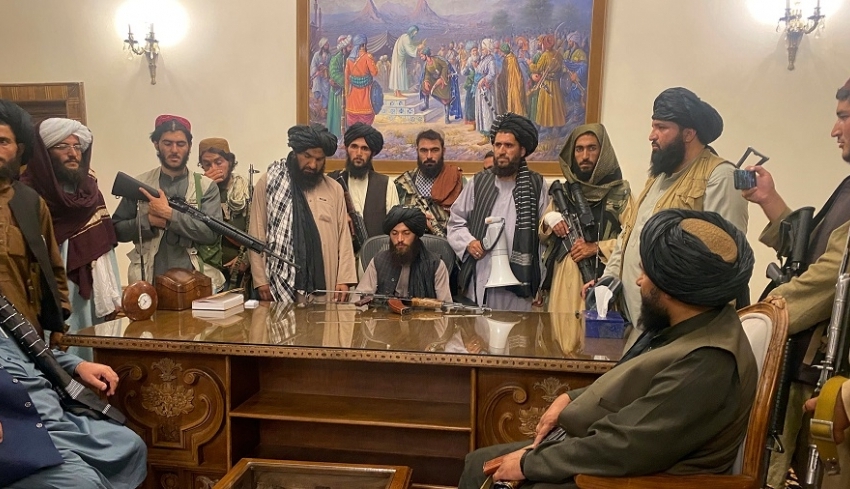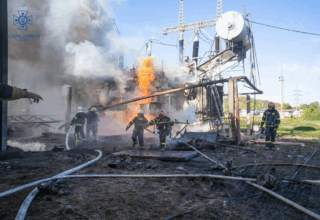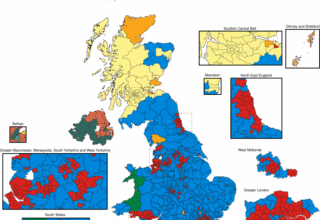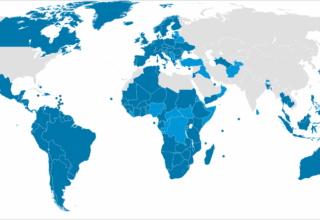
The world was shaken once again in August 15, as the Taliban militants took over the capital of Afghanistan, the momentum they’ve been waiting for almost 20 years since they were driven from Kabul by the US troops back in 2001. Such scenario was much likely predicted by many experts and politicians following president Biden’s decision to withdraw the US troops from Afghanistan based on the last year’s Doha deal between the Taliban and the US then-President Donald Trump, who agreed to a complete withdrawal of US military force (Agreement for Bringing Peace to Afghanistan, 2020) from Afghanistan. President Biden supported his decision by claiming that the Afghan government had enough capacity to sustain themselves and to govern the country on their own without being depended on the US or other Western powers to direct them (CNN, 2021).
Surprisingly or not, the consequences of the withdrawal took a shape rapidly rather than being anticipated. Taliban leaders gradually started to prepare for insurgency by taking the key northern cities, provinces and towns of Afghanistan under control until reaching the capital, Kabul. In less than two weeks, Taliban captured 26 of Afghanistan’s 34 provincial capitals (Al Jazeera, 2021). On their way forward, Taliban fighters faced practically no armed resistance from Afghanistan government. The government completely collapsed to even make an effort, the military troops were demoralized and the Afghan President Ashraf Ghani fled the country soon after the Taliban advanced on Kabul. Consequently, Taliban fighters did not hesitate to enter presidential palace and to declare their long-awaiting victory (ibid).
What Taliban’s rule is promising
Taliban’s rule is not something new for Afghans as they’ve already experienced the harsh regime from 1996 until 2001. Initially, Taliban was formed in the early 1990s by an Afghan faction of mujahideen, Islamic fighters who had resisted the Soviet occupation of Afghanistan (1979–89) with the covert backing of the U.S. Central Intelligence Agency and its Pakistani counterpart, the Inter-Services Intelligence directorate (ISI) (Laub, 2014). Mujahideen were then joined by younger Pashtun tribesmen who studied in Pakistan; taliban is Pashto for “students.” Pashtuns comprise a plurality in Afghanistan and are the predominant ethnic group in much of the country’s south and east (ibid).
In the initial post-Soviet era, the movement attracted popular support by promising to bring stability, peace and sharia (Islamic law) in Afghanistan after four years of conflict (1992-1996) (Rashid, 1999). In 1996, Taliban fighters seized the capital, Kabul and controlled some 90 percent of the country before being thrown out by the US troops in 2001 (ibid). Taliban’s jurisprudence was based on the Pashtuns’ pre-Islamic tribal code and interpretations of sharia. Taliban’s ideological basis for government was based on a strict and harsh interpretation of the Koran. They prescribed to a radical interpretation of Islam that mandates extreme conservatism and it differs greatly from all mainstream Muslim regimes (Rashid, 1999). Their ultimate aim was to purify Afghanistan from western ideologies and to create a peaceful and serene Islamic government (Laska, 2001).
For this purpose, the regime neglected social services and other basic state functions. They established the department for the Promotion of Virtue and Prevention of Vice that required women to wear the head-to-toe burqa, or chadri; banning music and television; and jailing men whose beards it deemed too short (ibid). The Taliban has also prohibited entertaining activities under its religious interpretations. They established mandatory praying schedules and anyone not following the mandatory praying schedules was subject to punishment or severe beating (Hartley-Blecic, 2001).
Among the most oppressive Taliban’s rules were their disregard for women’s rights (Hartley-Blecic, 2001). Females were banned from attending educational institutions, working outside the home, and appearing unescorted in public. Women had to be completely covered while going to the market, except for two small eye slits, and be accompanied by a male member of the household at all times. Failure to comply with either of the requirements was often punished by stoning (Laska, 2001). The four main policy regarding women included: no employment except in the health sector; halt of formal education; strict dress code with burqas; controlled movement of women outside the home (ibid).
The oppression of women in Afghanistan during Taliban regime, is still one of the most disgraceful human rights violations and it has captured the attention of human rights and feminists’ activists worldwide (Human Rights Watch, 2020). Today, after 20 years, when Taliban retook the power, there is a legitimate fear that the harsh rules find its way forward. The Taliban leaders in their public speeches, are conveying messages to reassure population that this time, their agenda is different, they are refusing violence and are ready to engaged in an international politics; promising to ensure the security and safety of Afghans and to respect the rights of women within the framework of Sharia (Al Jazeera, 2021). For now, there is not much known how Taliban is going to govern the country, how they will form the government, or which states they will cooperate. The upcoming months will make it clear which direction they are dragging the country. At this point, Taliban follows patient policies, avoiding to introduce any harsh rules and patrolling around Kabul to protect the safety of the population. However, hard to predict how long Taliban is considering to keep this pragmatic, mature image and what the future for Afghans look like under the regime who would never refuse to put their guns down. The fear is real and it’s on the ground. Tens of thousands of Afghans have already fled their homes, with fearing a return to the Taliban’s oppressive rule.
The Humanitarian Emergency
Afghans have already witnessed one of the worst humanitarian crisis and have been living in severe humanitarian conditions. An estimated 270,000 Afghans have been newly displaced inside the country since January 2021 – primarily due to insecurity and violence – bringing the total uprooted population to over 3.5 million (UNHCR, 2021). The number of civilian casualties has risen 29 per cent during the first quarter of this year compared to 2020, according to UN Assistance Mission in Afghanistan (ibid). An increasing proportion of women and children were among those targeted. Nearly 390,000 people have been displaced by the latest violence since January, bringing the total number of people displaced to 3.5 million (OCHA, 2021). According to the UN’s World Food Program, one in three Afghans – around 14 million people – are “acutely food insecure” (CARE, 2021). Factors include ongoing drought, as well as conflict, COVID-19, high food prices, and rampant unemployment. Afghanistan’s human development index value for 2019 is 0.511— which put the country in the low human development category—positioning it at 169 out of 189 countries and territories (UNDP, 2020). According to Multidimensional Poverty Index (MPI) which identifies multiple overlapping deprivations suffered by individuals in three dimensions such as health, education and standard of living, in Afghanistan 55.9 percent of the population (20,783 thousand people) are multidimensionally poor while an additional 18.1 percent are classified as vulnerable to multidimensional poverty (6,742 thousand people) (ibid). Moreover, years of violent attacks and armed clashes have severely impacted the basic infrastructural facilities, such as schools, hospitals, roads. People’s access to basic public services are limited.
In the recent days, the number of the terrified families leaving the homes have been enormously increased. Camps are overcrowded and children are sleeping out in the open space (NRC, 2021). Afghanistan is clearly facing a humanitarian emergency. Protection concerns are high, especially for women, minorities, people in rural areas, and those affiliated with foreign entities.
One of the urgent tasks is to reduce casualties and to provide the security so that the Afghans can get access to basic public health and public goods. Creation of a “humanitarian space” is much needed and the international community has a role to play in this process considering that Afghanistan has been highly depended on international assistance for many years. A wide range of governmental and nongovernmental organizations have been operating there for decades. The ongoing developments raise concerns regarding the operation of international organizations and whether the humanitarian action can be sustained under the Taliban regime. Developing a coherent humanitarian strategy must be the priority for international community partly because they are well aware of the fact, that Afghanistan’s economy is disintegrated and without international humanitarian aid, Afghans are left in desperation.
References
Al Jazeera (2021), “Taliban Continues advances”, accessed 17 August 2021 <https://www.aljazeera.com/news/2021/8/15/taliban-continues-advances-captures-key-city-of-jalalabad>.
Al Jazeera (2021), “Transcript of Taliban’s first news conference in Kabul”, accessed 18 August 2021 <https://www.aljazeera.com/news/2021/8/17/transcript-of-talibans-first-press-conference-in-kabul>.
Agreement for Bringing Peace to Afghanistan (2020), accessed 4 July 2021< https://www.state.gov/wp-content/uploads/2020/02/Agreement-For-Bringing-Peace-to-Afghanistan-02.29.20.pdf>.
CARE (2021), “Afghanistan Humanitarian Crisis”, accessed 17 August 2021 <https://edition.cnn.com/videos/politics/2021/07/02/joe-biden-afghanistan-frustrated-sot- vpx-nr.cnn>.
Hartley-Blecic, M. (2001). The invisible women: The taliban’s oppression of women in afghanistan. ILSA Journal of International & Comparative Law, 7(2), 553-582
Human Rights Watch (2020). “A crucial moment for women’s rights in Afghanistan”, accessed 17 August 2021 <https://www.hrw.org/news/2020/03/05/crucial-moment-womens-rights-afghanistan>.
Laub, Z. (2014). The Taliban in Afghanistan. Council on Foreign Relations, 4(7), 1-9
Laska, V. (2001). The Taliban, War, Religion and the New Order in Afghanistan
NRC (2021). “Afghanistan on the brink of major humanitarian crisis”, accessed 17 August 2021 < .”>https://www.unocha.org/story/daily-noon-briefing-highlights-afghanistan-ethiopia-covid-19-data-explorer>.
Rashid, A. (1999). The Taliban: exporting extremism. Foreign Affairs, 22-35
UNHCR (2021). “UNHCR warns of imminent humanitarian crisis in Afghanistan”, accessed 17 August 2021 <https://www.unhcr.org/news/briefing/2021/7/60ed3ba34/unhcr-warns-imminent-humanitarian-crisis-afghanistan.html>.
UNDP (2020). Human Development Report, accessed 18 August 2021 <http://hdr.undp.org/sites/default/files/Country-Profiles/AFG.pdf>.
By Mahmoud Refaat: The European Institute for International Law and International Relations.















